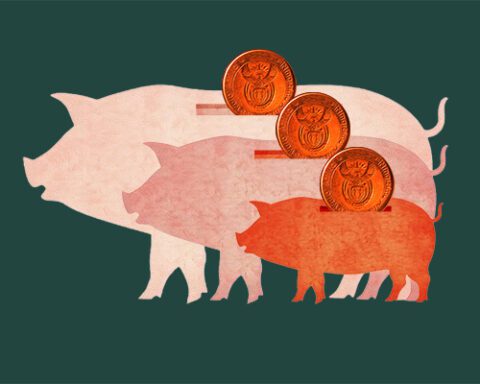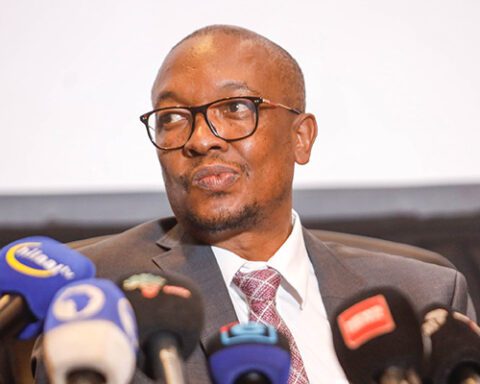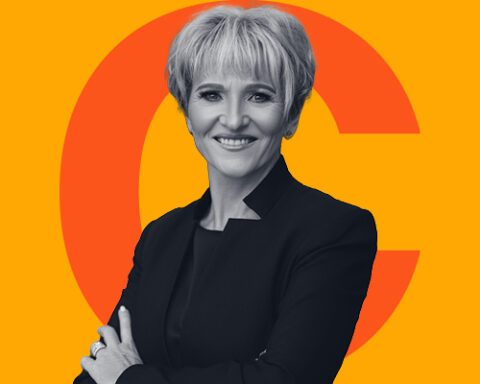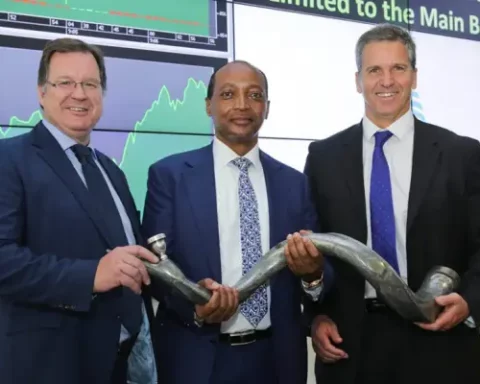Iain Williamson admits to some emotion delivering his final set of results at Old Mutual, a company he joined as an actuary 32 years ago.
“It’s quite surreal to think at the next set of results, I won’t be here,” the company CEO says. “I’ve been trying to push my emotions to the backburner, because I’ve still got six months to go, but it’s quite a sentimental thing.”
Handily for Williamson’s swansong, Old Mutual’s results weren’t half bad.
Overall, the insurer’s headline earnings were up 14% to R6.6bn, thanks to a whopping investment return. When you drill down into the operations specifically – the core of the business – this growth was a more muted 4%.
Shaun Murison, senior analyst at IG Markets, says this demonstrated “exceptional financial resilience and strategic progress”, as Old Mutual rode the wave of “favourable economic conditions”.
Everyone likes to go out on a high, and Williamson will leave having re-established the 179-year-old firm as a South African insurance juggernaut, after a 15-year period in the strategic wilderness, where it tried to stamp its mark on London, and after middling success, came home.
When he joined in 1993, Old Mutual owned huge swathes of the JSE, including Nedbank. But in 1999, it demutualised and listed on the London Stock Exchange, effectively taking its eye off the South African market.
It surrendered market share and relevance before, in 2016, having an epiphany which led to it moving back home.
“From 1999 to 2018, our focus was elsewhere in the world. But once we decided we needed to take the insurance business back to South Africa, it was so obvious to all of us that this was the right thing to do,” Williamson tells Currency.
As part of what it termed the “managed separation”, it split the UK-listed entity into two: the foreign wealth management business now called Quilter, and the traditional Old Mutual business, focused on South Africa. And, for good measure, it unbundled 30% of Nedbank back to its shareholders.
“Since 2018, we have returned R89bn to shareholders. You could buy quite a few JSE-listed companies with that amount,” he says.
Williamson will also point out that while it might seem like Old Mutual had its foot off the gas for some years, it still has the largest insurance book in the country. And, besides the mega-city that is its head office in Pinelands (with its own full-service shopping mall), it has 13.7-million customers, 28,000 staff, and manages a scarcely conceivable R1.5-trillion in assets.
“So, while it has taken us a good few years for this refocusing on South Africa to become apparent, I think we’re there now.”
Well, almost there. Its profitability isn’t “quite there yet”, he admits, with its return on net asset value at 12.7% – considerably better than the 9.4% of two years ago, but not anywhere near where it would like.
As it happens, the wider investment market seemed unsure about the results, with Old Mutual’s share price falling 2.2% yesterday.
Avior’s Adrienne Damant says this reflected the fact that there is unfinished business to Old Mutual’s recovery.
“On the face of it, the results didn’t look too bad, but when you look deeper, there were a few things that made people uneasy,” she says.
These included persistency issues in its life insurance business, an impairment of its investment in China, as well as some ambitious (and expensive) plans for the new OM Bank – reflecting a big bet that the bank will reshape the company.
More banking than insurance
OM Bank is launching into a crowded market where, besides the incumbents (its erstwhile subsidiary Nedbank), a flurry of new challengers like Discovery Bank and TymeBank will not willingly hand over clients.
But Williamson is a massive believer. Just the day before, he signed up for an account himself. “It took five minutes, including seeding my account and going through the Fica checks,” he says.
Still not everyone is convinced that its trajectory to profit will be so smooth.
Damant, for instance points out that the signs are that it’ll take slightly longer than initially envisaged to reach profitability. And even getting to the break-even point will cost it between R1.1bn and R1.3bn per year – more than the R1bn peak losses by Discovery Bank in 2019.
“The risk, from an investor perspective, is that it will take a long time to get any return from that investment. And even then, you don’t know to what extent the bank can contribute to profits, given the competition. So there is a lot of concern about the risk versus reward balance,” she says.
Williamson concedes it won’t be easy to reach the break-even point of 2-million to 2.5-million customers, which it hopes to hit in 2028.
But he points out that the bank isn’t launching cold: it already has a R16bn loan book and an existing customer base, which it inherited with the lending business it launched years ago to its insurance clients.
Isn’t he scared of going head-to-head with Capitec, one of corporate South Africa’s biggest success stories? After all, Capitec not only targets the same lower-income customers, it now boasts 23-million clients, who, you’d imagine, might be reluctant to swap allegiance at this point.
“Capitec is our biggest competitor, full stop, not just in the mass market. When we launched our Old Mutual Finance in 2008, it was largely a defensive rationale because they’d been encroaching on our business for a long time,” he says.
But OM Bank, he says, offers something no other lender does: a fully digital bank and the benefit of more than 11,000 financial advisers which can help structure all their finance products into a single facility account.
After 32 years, in fact, Williamson says his only regret is leaving now, at a time when Old Mutual’s next chapter, in banking, is being inscribed.
“If there is one thing that would have convinced me to stay, it is that, after three years, the bank has finally launched.”
He is such a big believer in the potential of the bank to reshape the company, in fact, that he expects the Old Mutual of a decade hence to be more of a banking business than an insurance business.
“My dream is that the bank will be so successful that we’ll be able to pivot the whole business behind it. The bank can end up as the front end of the company, which will make it an entirely different organisation,” he says.
Sign up to Currency’s weekly newsletters to receive your own bulletin of weekday news and weekend treats. Register here.









